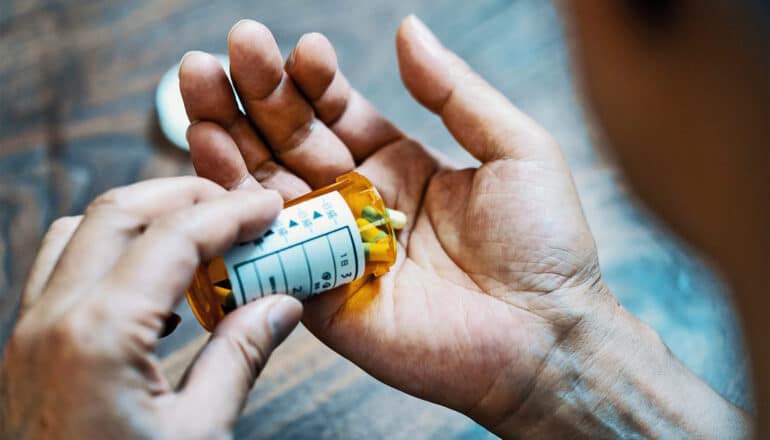Can a pea-sized part of the brain help treat addiction?
- Researchers are investigating using a small region of the brain called the habenula to potentially treat drug addiction.
- The habenula, also known as a “pea-sized” part of the brain, has been found to play an outsized role in addiction and substance abuse, according to research by Ines Ibañez-Tallon.
- The habenula is a highly connected command center that detects and sends chemical signals to other brain regions, including those involved in pleasure-inducing neurotransmitters like dopamine and serotonin.
- Studies have shown that the habenula helps regulate emotional states and cognitive behaviors, such as motivation, disappointment, depression, and stress.
- The research has sparked a federally funded search for new medications that may help people overcome chemical dependencies, including those related to opioid addiction.

Researchers are investigating using a pea-sized node in the brain to potentially treat drug addiction.
Major scientific discoveries can arise from simple decisions: say, by simply looking where virtually no one else has. Such was the case for Ines Ibañez-Tallon, a research associate professor in the Laboratory of Molecular Biology at The Rockefeller University, who over the past decade has revealed how one small, understudied region of the brain plays an outsized role in addiction and substance abuse.
It’s work that’s sparked a federally funded search for new medications that may help people beat chemical dependencies.
Known as the habenula, this narrow strip of gray and white matter—so tiny it’s considered a microstructure—is an ancient piece of the brain, first appearing in vertebrates about 360 million years ago.
Digging deep into this little node, Ibañez-Tallon uncovered an extremely complex and highly connected command center—one that’s part finely tuned sensor and part lightning-fast switchboard, detecting and sending chemical signals to other brain regions, including those that produce pleasure-inducing and modulatory neurotransmitters such as dopamine, acetylcholine, serotonin, and norepinephrine.
She’s also documented that the habenula helps regulate emotional states and cognitive behaviors, including motivation, disappointment, depression, and stress.
In addition to identifying a potential drug target that could directly address opioid addiction, her insights also point to how positive behaviors could boost healthy reward responses.
Here, she explains how she brought this little-known brain region to light:
The post Can a pea-sized part of the brain help treat addiction? appeared first on Futurity.
